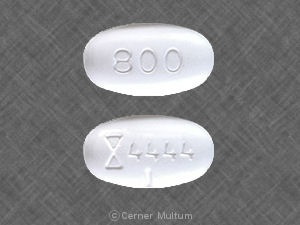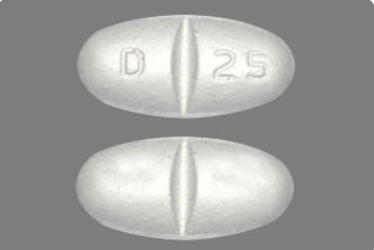A lethal dose of gabapentin was not identified in mice and rats receiving single oral doses as high as 8000 mg/kg. Signs of acute toxicity in animals included ataxia, labored breathing, ptosis, sedation, hypoactivity, or excitation.
 Acute oral overdoses of NEURONTIN up to 49 grams have been reported. In these cases, double vision, slurred speech, drowsiness, lethargy, and diarrhea were observed. All patients recovered with supportive care. Coma, resolving with dialysis, has been reported in patients with chronic renal failure who were treated with NEURONTIN.
Acute oral overdoses of NEURONTIN up to 49 grams have been reported. In these cases, double vision, slurred speech, drowsiness, lethargy, and diarrhea were observed. All patients recovered with supportive care. Coma, resolving with dialysis, has been reported in patients with chronic renal failure who were treated with NEURONTIN.
Gabapentin can be removed by hemodialysis. Although hemodialysis has not been performed in the few overdose cases reported, it may be indicated by the patient’s clinical state or in patients with significant renal impairment.
If overexposure occurs, call your poison control center at 1-800-222-1222.
Gabapentin is not classified as a controlled substance by the DEA (Drug Enforcement Administration) and is not included in the annual reports on drug use and misuse by the Substance Abuse and Mental Health Services Administration (SAMHSA). However, it is chemically similar to pregabalin (Lyrica), which is a Schedule V controlled substance.
Historically, gabapentin’s abuse potential was considered very low. Recently, though, there have been growing concerns about its misuse, particularly by individuals seeking to enhance the effects of opioids. A journal article by medical professionals in Scotland indicates that gabapentin has become recognized as a drug of abuse there, with users reporting various reinforcing effects.
What is Gabapentin Overdose and How to Treat Gabapentin Overdose ?
Gabapentin is a medication primarily used to treat seizures and nerve pain. However, like any medication, it can be harmful if taken in excessive amounts. Gabapentin overdose occurs when someone takes more than the prescribed dose, leading to potentially serious symptoms and complications.

Symptoms of gabapentin overdose may include:
- Extreme drowsiness or sedation
- Dizziness or loss of coordination
- Slurred speech
- Confusion
- Difficulty breathing
- Coma
Treatment for a gabapentin overdose might include the following measures:
- Airway Maintenance, Supplemental Oxygen, and Ventilation Assistance: If the patient is unable to breathe independently, ensure the airway is clear, provide supplemental oxygen, and assist with ventilation as needed.
- Administration of Activated Charcoal or Gastric Lavage: To physically remove any remaining gabapentin in the gastrointestinal tract, activated charcoal can be administered, or gastric lavage can be performed.
- Protection from Self-Injury: If the patient exhibits significant ataxia (loss of coordination), take precautions to protect them from self-injury.
- Support and Treatment for Stupor or Coma: Provide necessary medical support and monitoring for patients experiencing stupor or coma.
- Medical Treatment for Agitation, Delirium, and Other Significant Developments: Manage symptoms such as agitation and delirium with appropriate medical interventions and monitor for any other significant clinical developments.
If you suspect someone has overdosed on gabapentin, it’s essential to seek medical help immediately. Here are steps to take in treating gabapentin overdose:
- Call Emergency Services: If someone is showing signs of gabapentin overdose, call emergency services (such as 911 in the United States) immediately. Time is critical in these situations, and prompt medical attention can save lives.
- Provide Information: When speaking to emergency responders or healthcare professionals, provide as much information as possible about the situation. This includes the individual’s age, weight, any known medical conditions, and the amount of gabapentin ingested (if known).
- Monitor Vital Signs: While waiting for emergency services to arrive, monitor the individual’s vital signs, including breathing, pulse, and level of consciousness. If necessary, perform CPR if the person stops breathing or their heartbeat becomes irregular.
- Do Not Attempt Home Remedies: Avoid giving the person anything to eat or drink unless instructed to do so by emergency personnel. Also, do not attempt to induce vomiting, as this can cause further complications.
- Treatment at the Hospital: Once at the hospital, healthcare professionals will assess the individual’s condition and provide appropriate treatment. Treatment may include administering activated charcoal to help absorb the gabapentin, providing intravenous fluids to maintain hydration, and closely monitoring vital signs.
- Supportive Care: Depending on the severity of the overdose and the individual’s symptoms, they may require additional supportive care, such as respiratory support or medications to stabilize blood pressure.
- Psychological Support: In cases of intentional overdose, psychological support and evaluation may be necessary to address any underlying mental health issues contributing to the overdose.
